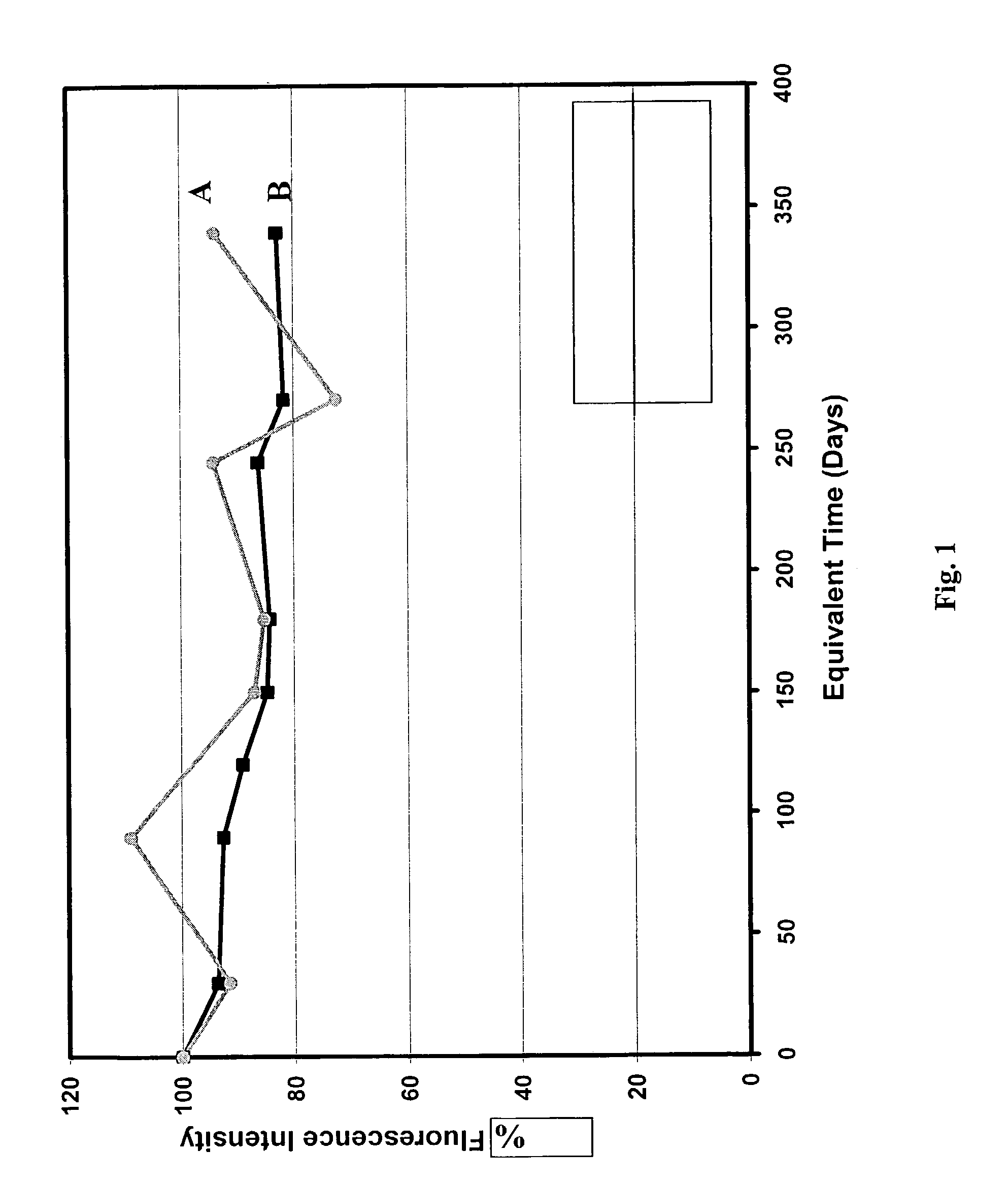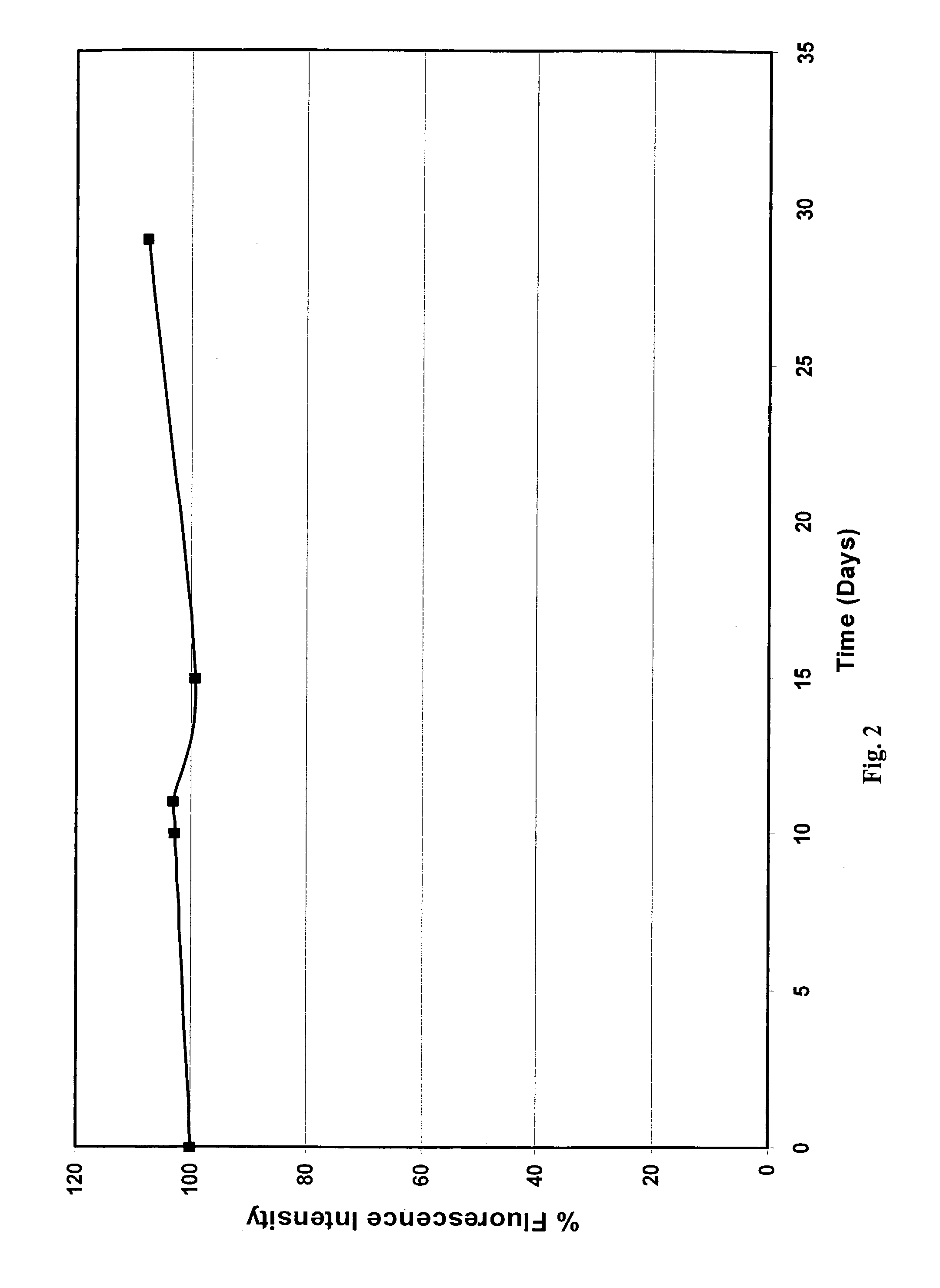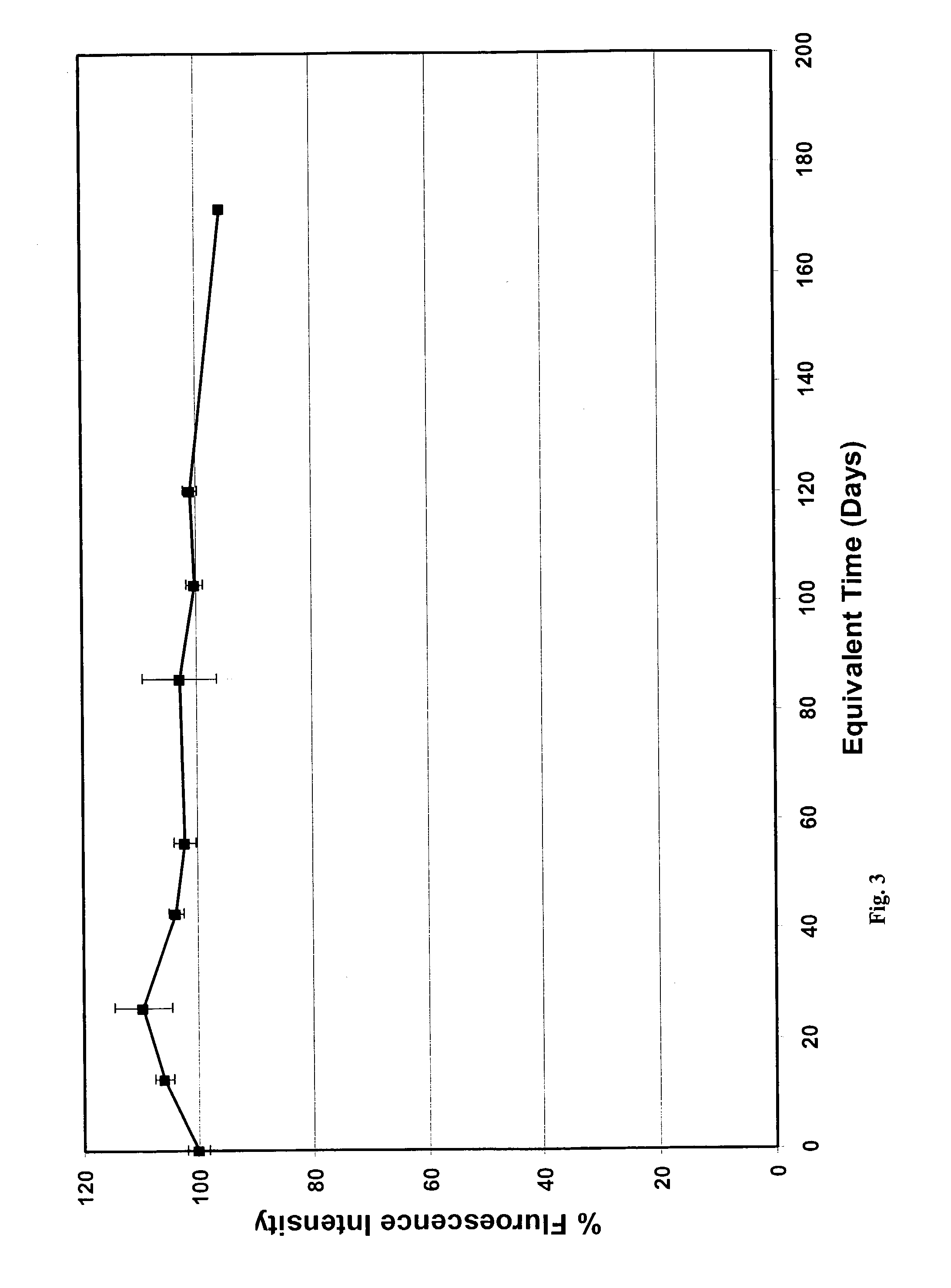Functionalized compositions for improved immobilization
a functionalized composition and immobilization technology, applied in the field of functionalized compositions, can solve the problems of severely restricting coupling yields and unreported pre-activation of polystyrene surfaces with this reagent, and achieve the effects of improving the coupling yield of biomolecules, improving stability, and improving p
- Summary
- Abstract
- Description
- Claims
- Application Information
AI Technical Summary
Benefits of technology
Problems solved by technology
Method used
Image
Examples
example 6.3.1
This example relates to, but is not limited to, the use of functionalized, or pre-activated, microspheres for covalent immobilization of biomolecules.
[0074](a) A solid support comprised of a polymeric microsphere, preferably polystyrene / divinyl-benzene, containing carboxyl functional groups at least on its surface.[0075](b) The solid support (a) where the solid support contains one or more fluorescent dyes in distinguishable ratios.[0076](c) Solid support (b) where at least surface carboxyl groups have been modified with a 4,7,10-trioxa-1,13-tridecanediamine linker.[0077](d) Solid support (c) where the linker has been modified and / or contains the novel reactive group mono-fluoro squaric acid (MFS).[0078](e) A biomolecule, specifically an oligonucleotide probe, containing a primary amine terminus.[0079](f) Spontaneous, covalent coupling of solid support (d) and biomolecule (e) to form a stable, covalent bond.[0080](g) Use of the biomolecule-coupled solid support (f) in a single or mu...
example 6.3.2
This example relates to, but is not limited to, the use of functionalized, or pre-activated, microspheres for covalent immobilization of biomolecules.
[0081](a) A solid support comprised of a polymeric microsphere, preferably polystyrene / divinyl-benzene, containing carboxyl functional groups at least on its surface.[0082](b) The solid support (a) where the solid support contains one or more fluorescent dyes in distinguishable ratios.[0083](c) Solid support (b) where at least surface carboxyl groups have been modified with a cystamine linker.[0084](d) Solid support (c) where the linker has been modified and / or contains the novel vinyl sulfone (VS) reactive group.[0085](e) A biomolecule, specifically an antibody, containing a primary amine or thiol.[0086](f) Spontaneous, covalent coupling of solid support (d) and biomolecule (e) to form a stable, covalent bond.[0087](g) Use of the biomolecule-coupled solid support (f) in a single or multiplexed immunoassay.
example 6.3.3
This example relates to, but is not limited to, the use of functionalized, or pre-activated, microspheres for covalent immobilization of biomolecules.
[0088]a) A solid support comprised of a polymeric microsphere, preferably polystyrene / divinyl-benzene, containing carboxyl functional groups at least on its surface.[0089]b) The solid support (a) where the solid support contains one or more fluorescent dyes in distinguishable ratios.[0090]c) Solid support (b) where the carboxyl groups have been modified to contain the novel tetra-fluoro-sulfophenyl ester (TFS) reactive group.[0091]d) A biomolecule, specifically an antigen, containing a primary amine.[0092]e) Spontaneous, covalent coupling of solid support (c) and biomolecule (d) to form a stable, covalent bond.[0093]f) Use of the biomolecule-coupled solid support (e) in a single or multiplexed immunoassay.
PUM
| Property | Measurement | Unit |
|---|---|---|
| pH | aaaaa | aaaaa |
| temperature | aaaaa | aaaaa |
| temperature | aaaaa | aaaaa |
Abstract
Description
Claims
Application Information
 Login to View More
Login to View More - R&D
- Intellectual Property
- Life Sciences
- Materials
- Tech Scout
- Unparalleled Data Quality
- Higher Quality Content
- 60% Fewer Hallucinations
Browse by: Latest US Patents, China's latest patents, Technical Efficacy Thesaurus, Application Domain, Technology Topic, Popular Technical Reports.
© 2025 PatSnap. All rights reserved.Legal|Privacy policy|Modern Slavery Act Transparency Statement|Sitemap|About US| Contact US: help@patsnap.com



